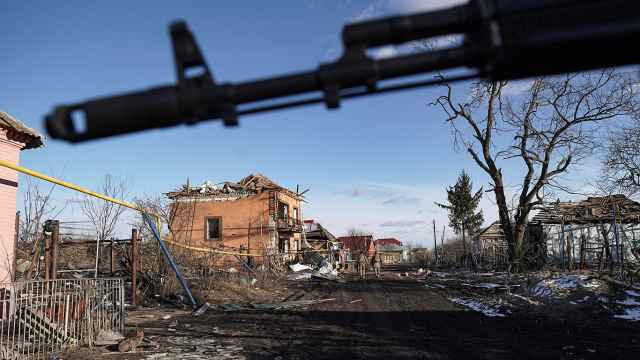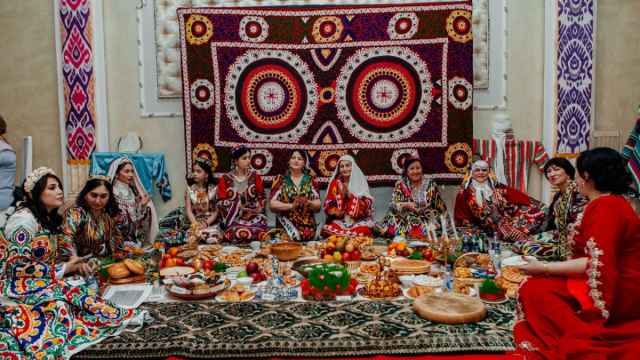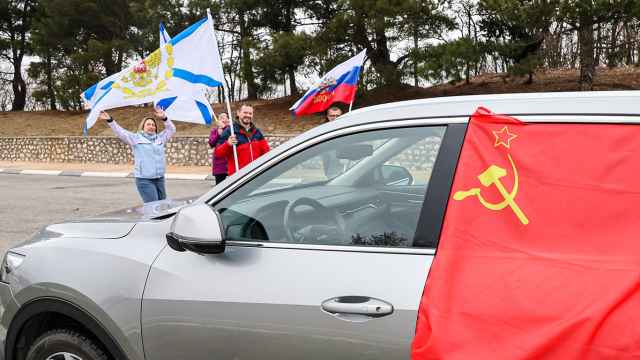In Photos: 10 Years Ago, the War in Donbas Began
In April 2014, an uprising by Russia-backed forces in eastern Ukraine marked the outset of the conflict in the Donbas between Russia and Ukraine.
Shortly after the Kremlin's March 2014 annexation of Crimea, a group of fighters led by Russian military commander Igor Girkin, also known by his alias Strelkov, joined pro-Russian separatist forces in the Donetsk region of Ukraine.
The Ukrainian city of Sloviansk became a point of heavy fighting between the Ukrainian armed forces and pro-Russian separatists who, in April 2014, declared the sovereignty of the Donetsk People's Republic. The Luhansk People's Republic declared its independence from Kyiv at the end of that month.
Russia, which recognized the self-proclaimed Donetsk and Luhansk "people's republics" in 2022 — and later annexed them — used the Donbas conflict as a pretext for its full-scale invasion of Ukraine.
Ten years after the fighting began, the Donbas — a major center of the coal industry and metallurgy, previously populated by 6 million mostly Russian-speaking people — remains a grim theater of warfare.
Here’s a look back at some of the events of 2014:
Shortly after the Kremlin's March 2014 annexation of Crimea, a group of fighters led by Russian military commander Igor Girkin, also known by his alias Strelkov, joined pro-Russian separatist forces in the Donetsk region of Ukraine.
The Ukrainian city of Sloviansk became a point of heavy fighting between the Ukrainian armed forces and pro-Russian separatists who, in April 2014, declared the sovereignty of the Donetsk People's Republic. The Luhansk People's Republic declared its independence from Kyiv at the end of that month.
Russia, which recognized the self-proclaimed Donetsk and Luhansk "people's republics" in 2022 — and later annexed them — used the Donbas conflict as a pretext for its full-scale invasion of Ukraine.
Ten years after the fighting began, the Donbas — a major center of the coal industry and metallurgy, previously populated by 6 million mostly Russian-speaking people — remains a grim theater of warfare.
Here’s a look back at some of the events of 2014:
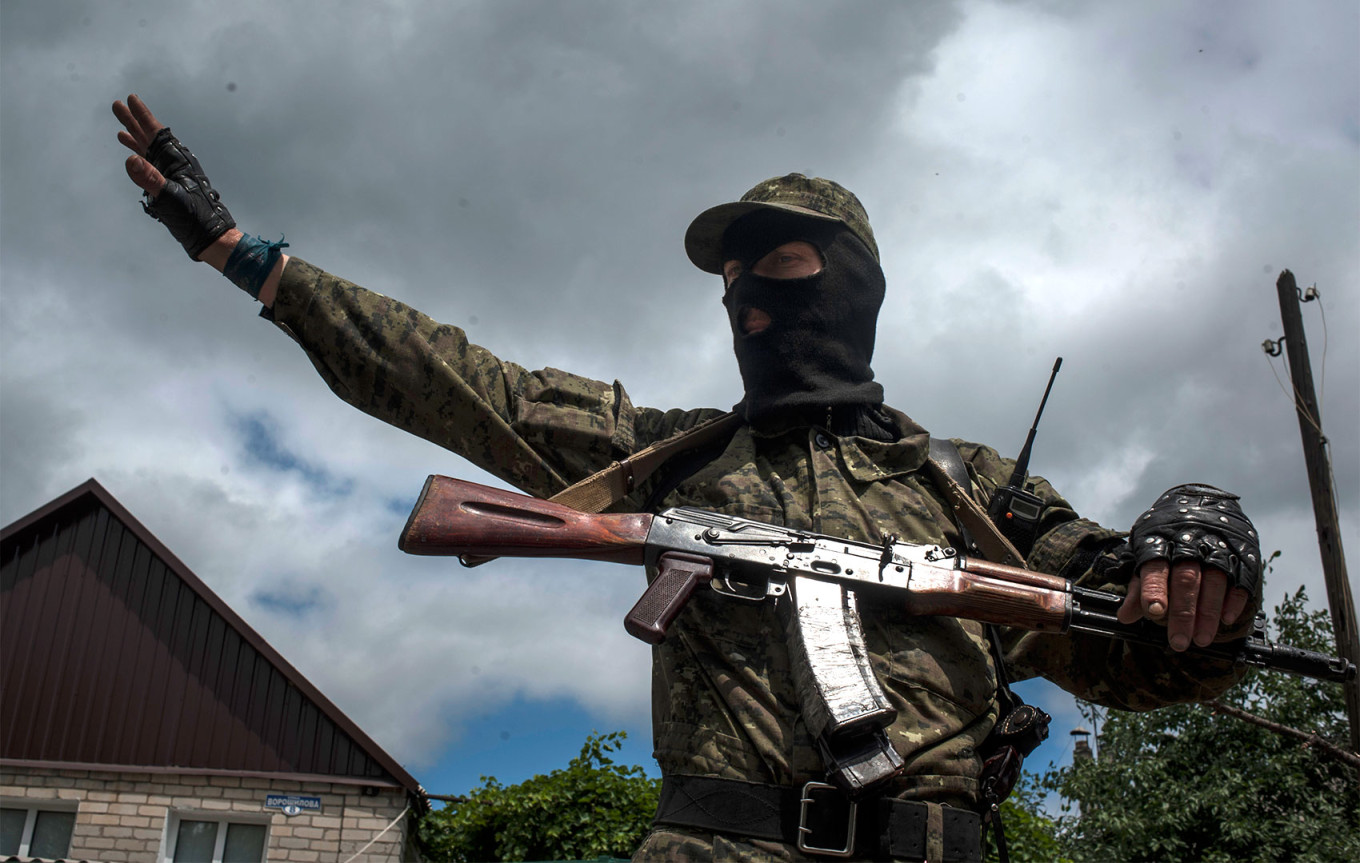
A pro-Russian fighter stands guard at a checkpoint in the eastern Ukrainian city of Sloviansk.
Evgeniy Maloletka / AP / TASS
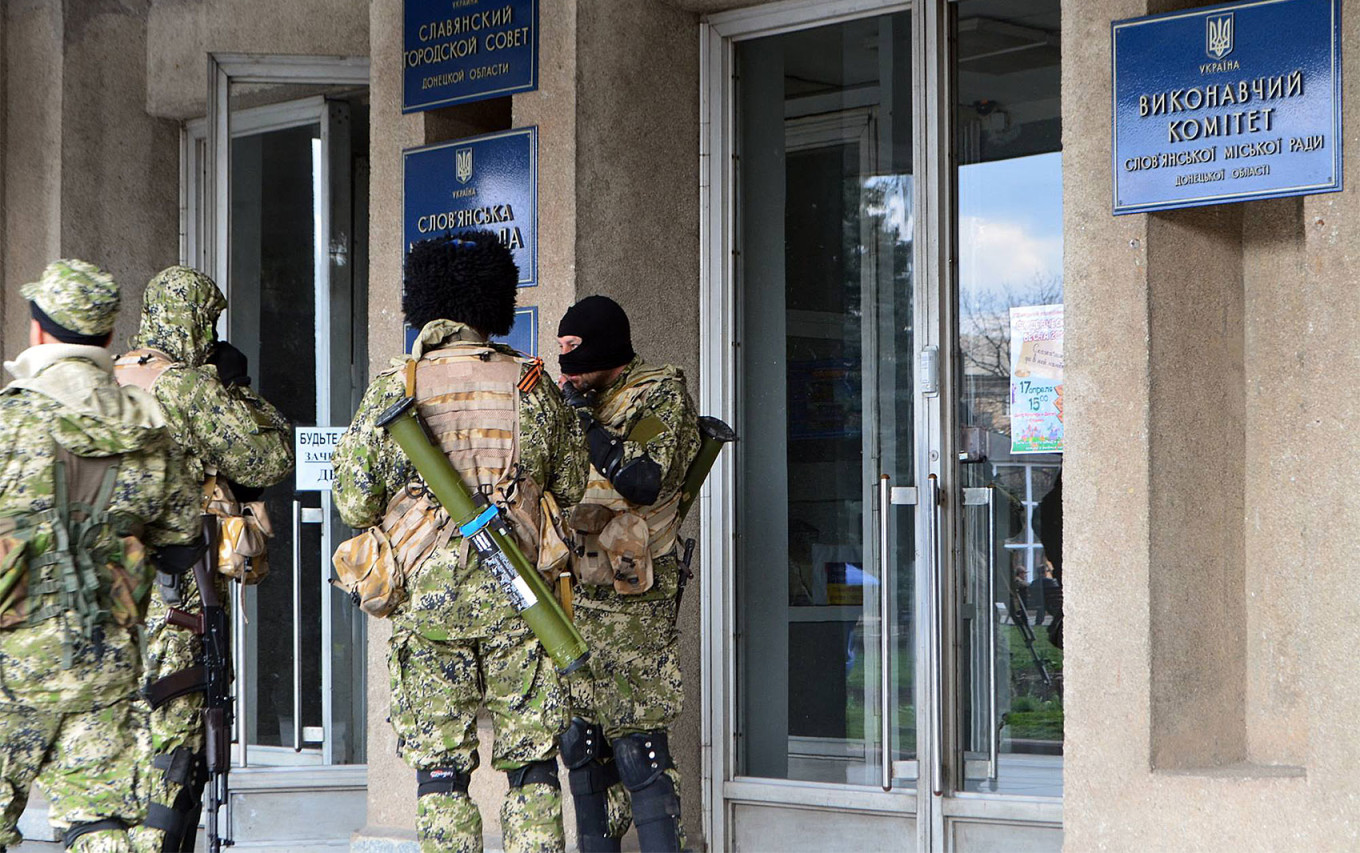
Military commander Igor Strelkov's (Girkin's) fighters near the Sloviansk administration in April 2014.
Yevgen Nasadyuk (CC BY-SA 3.0)
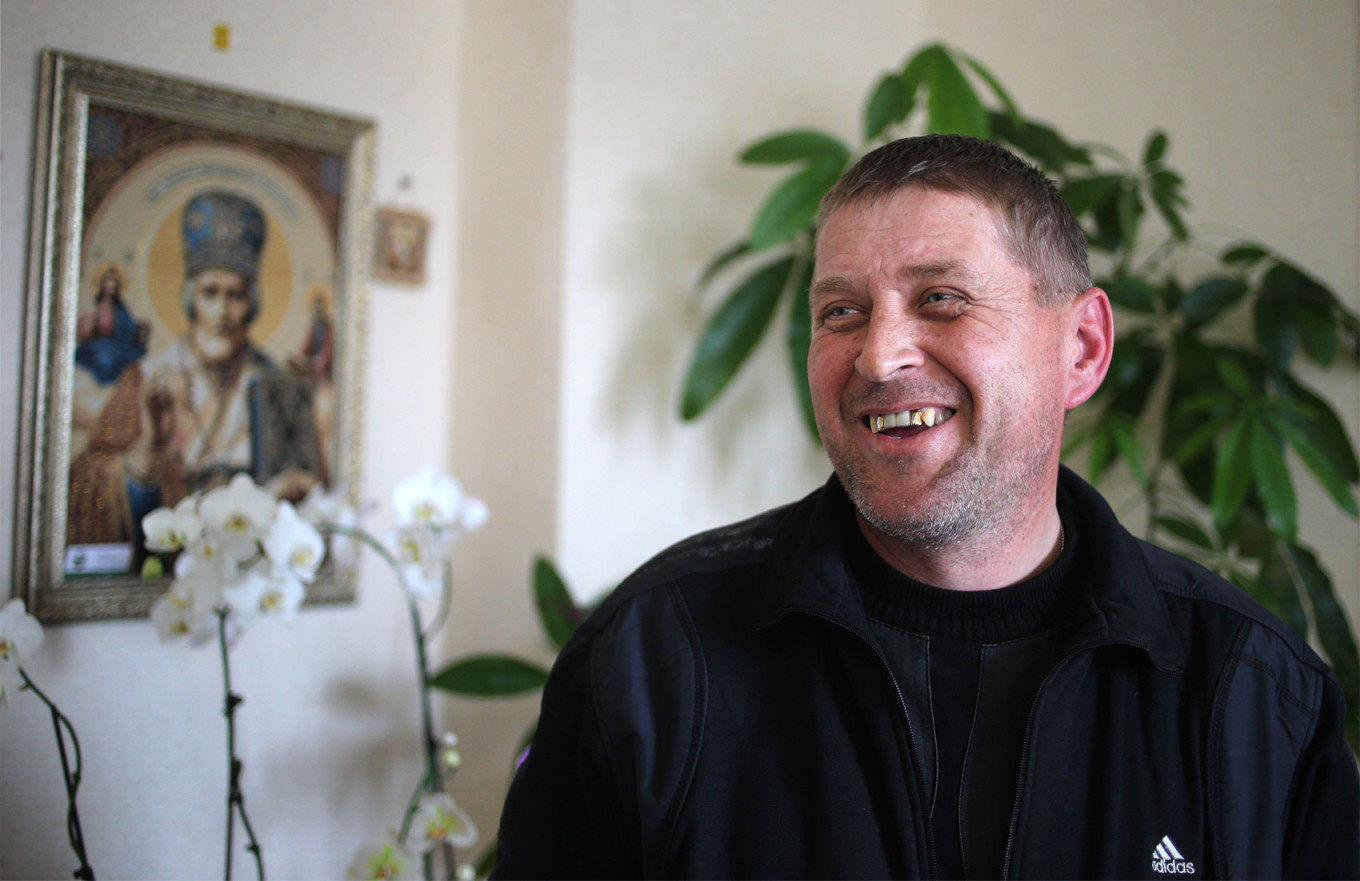
Vyacheslav Ponomaryov, the self-proclaimed mayor of Sloviansk who was supported by pro-Russian separatists, in Sloviansk city hall.
Mikhail Pochuev / TASS
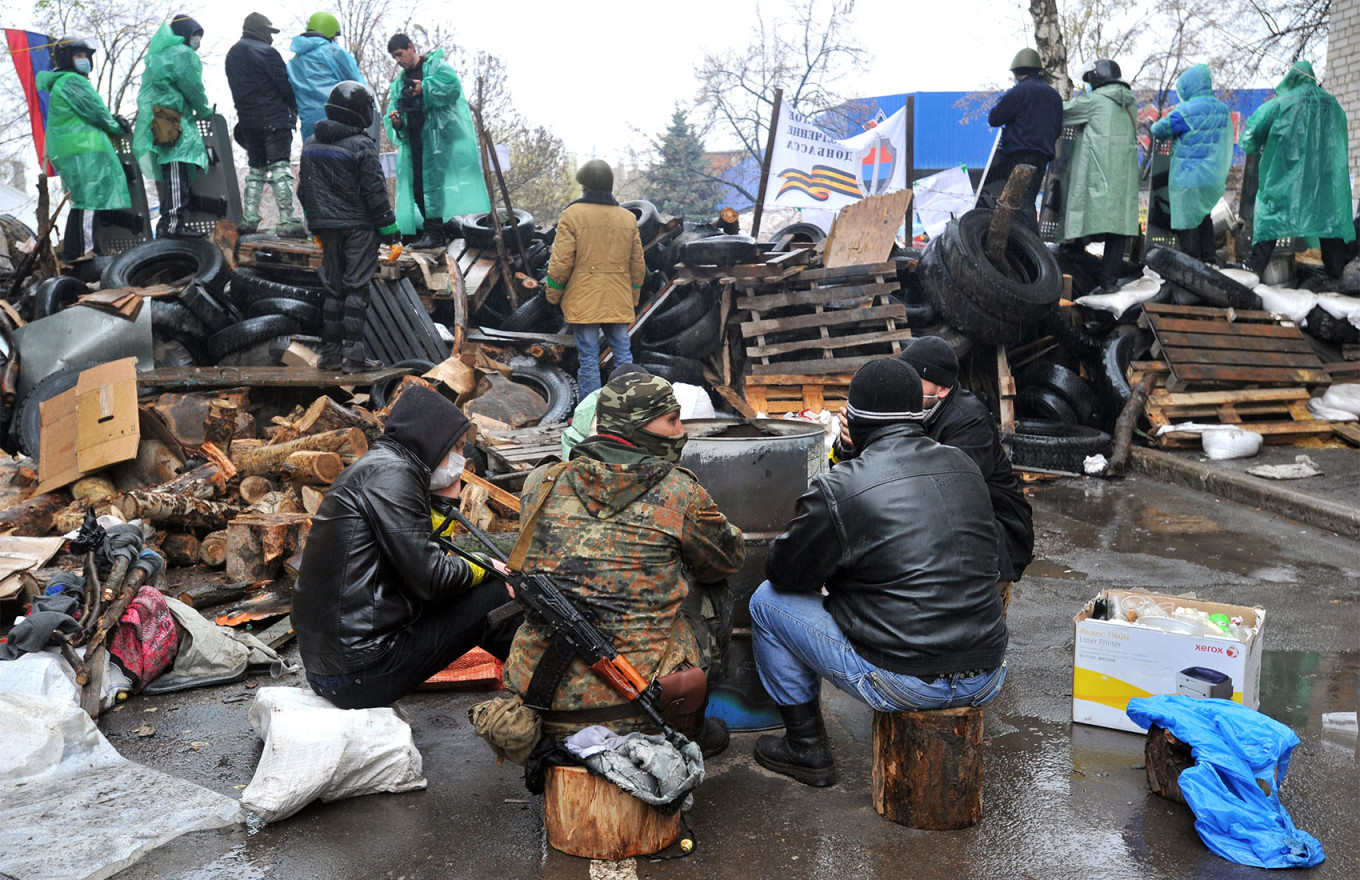
Pro-Russia separatists warm themselves near a barricade outside a regional police building seized by armed forces in Sloviansk in April 2014.
Genya Savilov / AFP
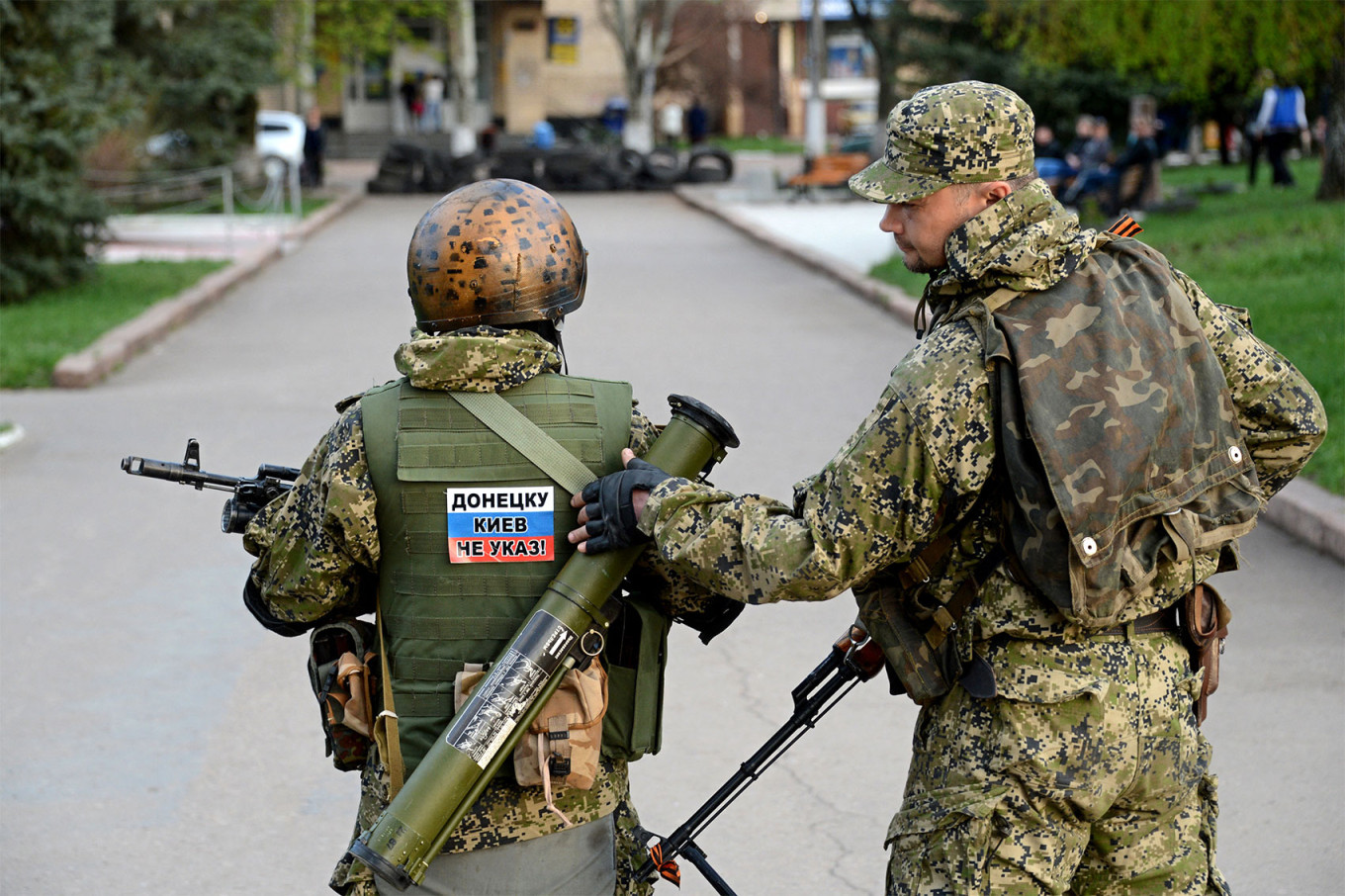
Armed men wearing military fatigues show a sticker with text reading "Donetsk don't listen to Kyiv" during a pro-Russian rally in Sloviansk in April 2014.
Kirill Kudryavtsev / AFP
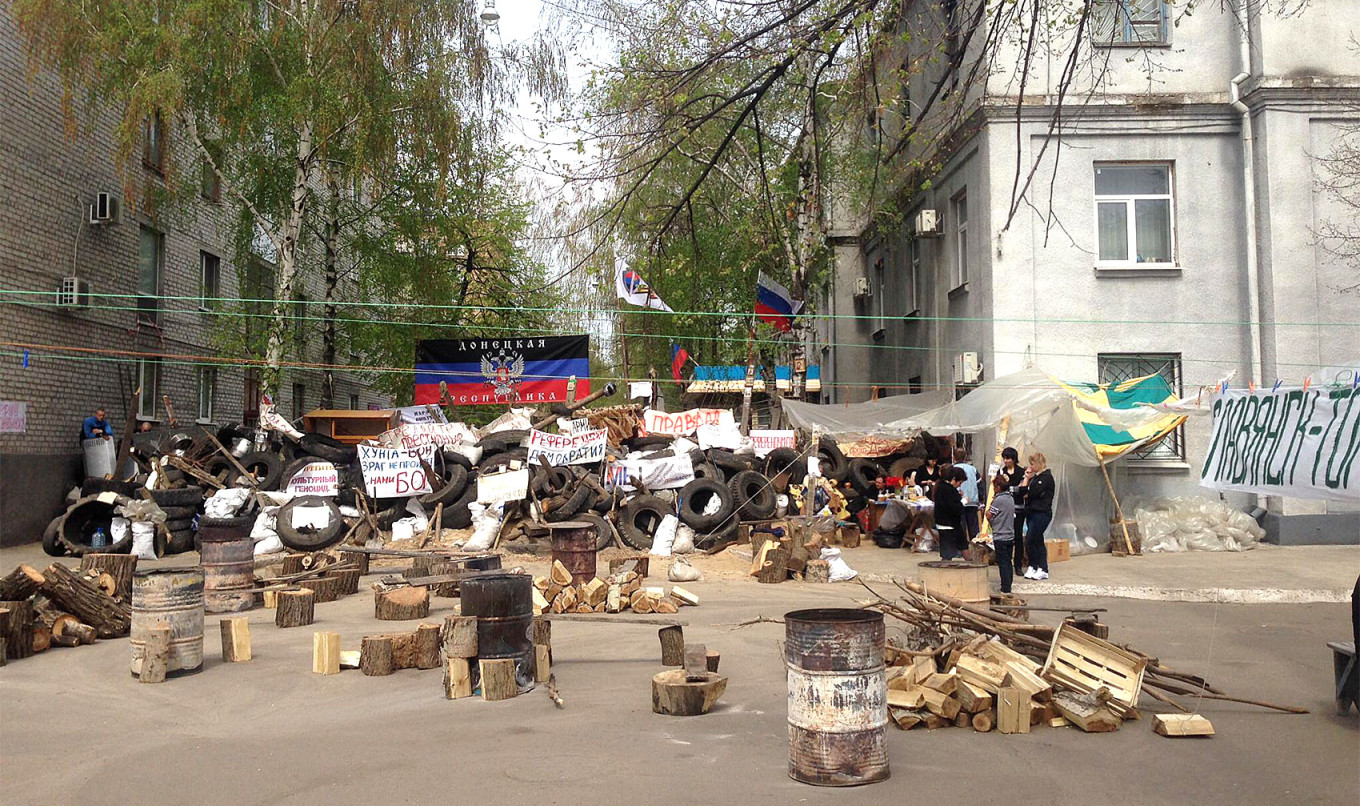
A barricade outside the police regional building seized by the separatists in April 2014.
Aleksandr Sirota (CC BY-SA 3.0)
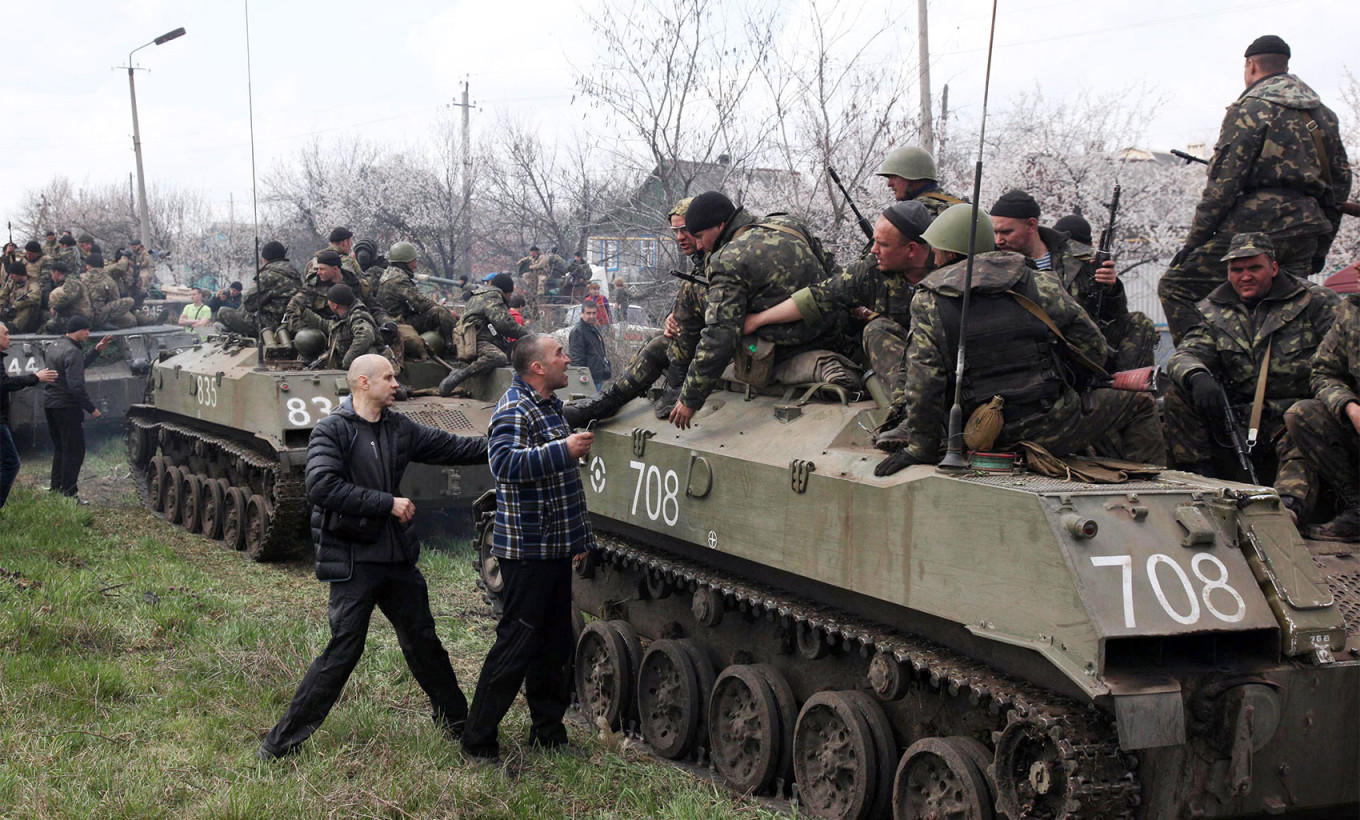
Pro-Russian separatists block a column of Ukrainian soldiers riding on armored personnel carriers in the eastern Ukrainian city of Kramatorsk in April 2014.
Anatoliy Stepanov / AFP
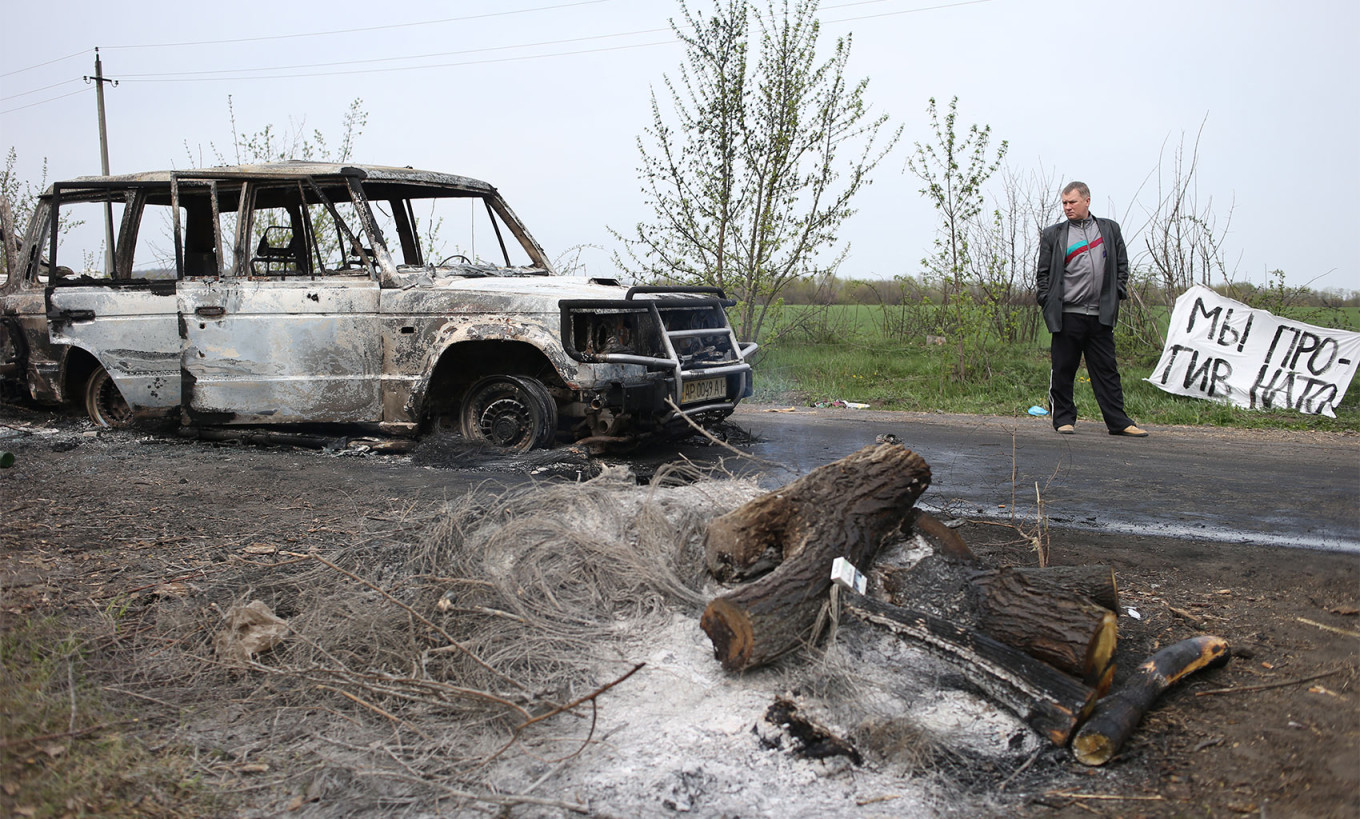
A burnt-out car after an overnight attack at a checkpoint at the entrance to Sloviansk.
Mikhail Pochuev / TASS
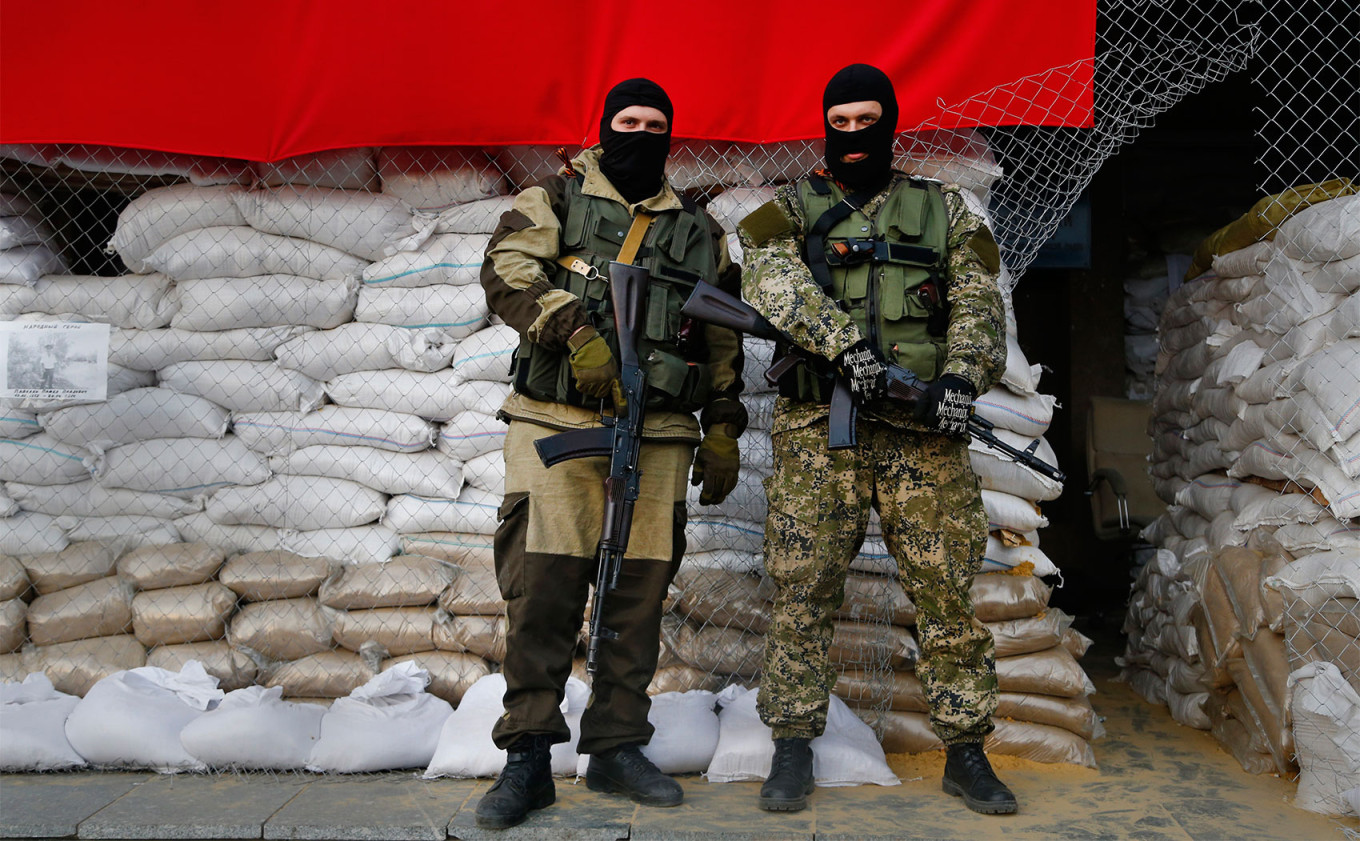
Armed pro-Russian separatists barricades in front of city hall in Sloviansk.
Sergei Grits / AP / TASS
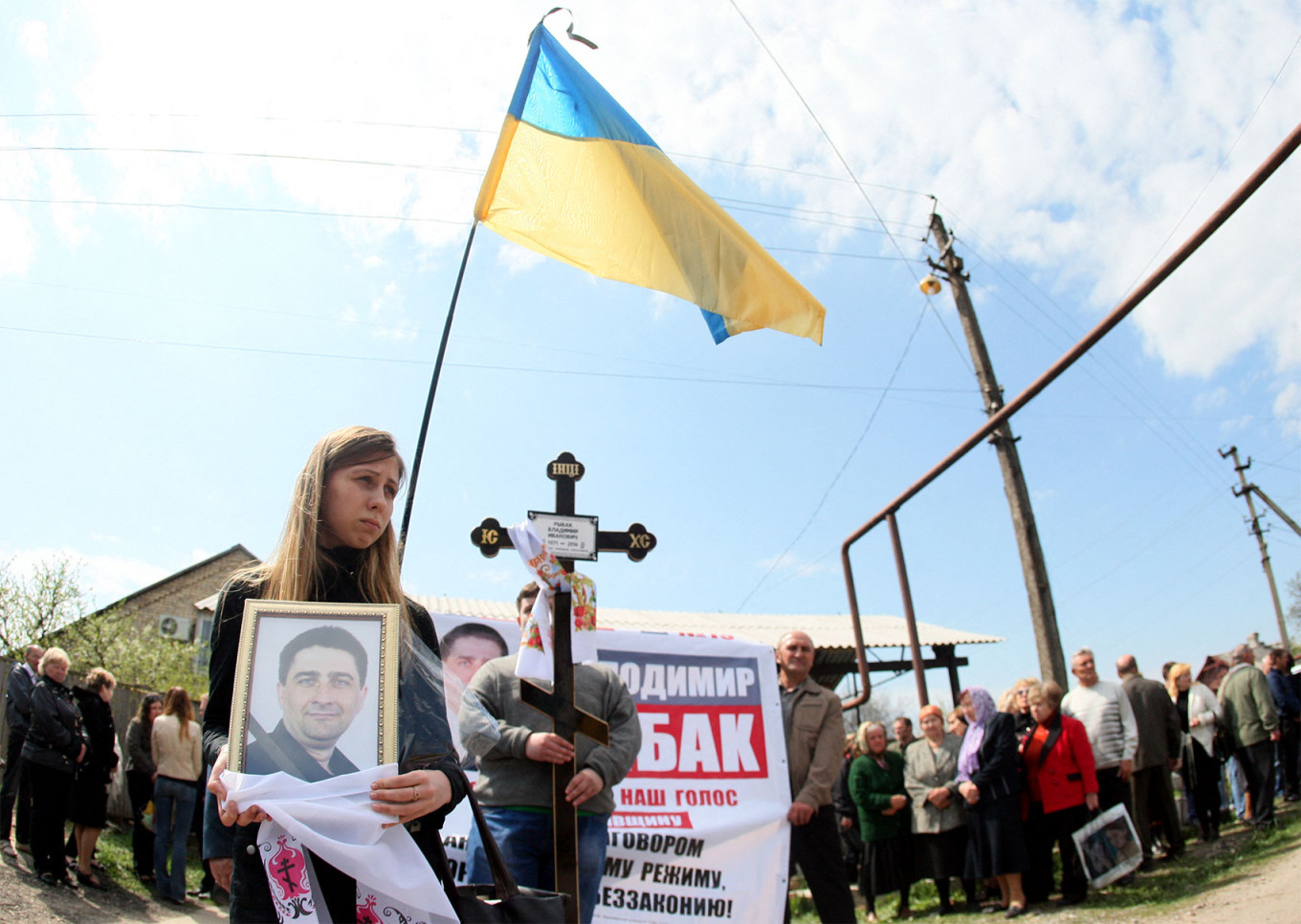
People carry a Ukrainian flag and a portrait of Volodymyr Rybak, a local councilor from a pro-Western party who was reportedly killed by pro-Russia separatists in Sloviansk, during his funeral ceremony in the eastern Ukrainian city of Horlivka, Donetsk region, on April 24, 2014.
Anatoliy Stepanov / AFP
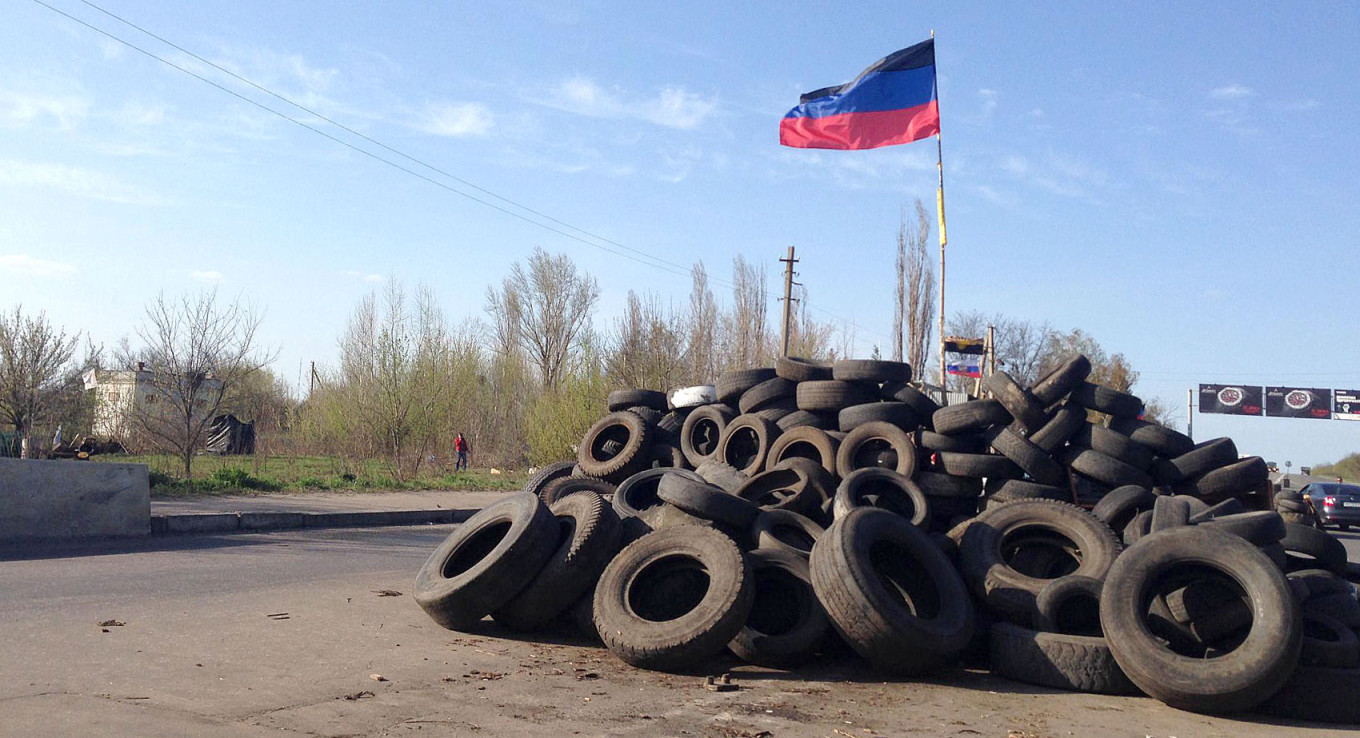
A checkpoint in Sloviansk in April 2014.
Aleksandr Sirota (CC BY-SA 3.0)



